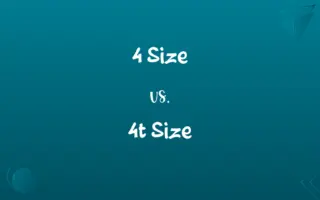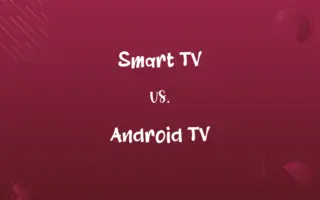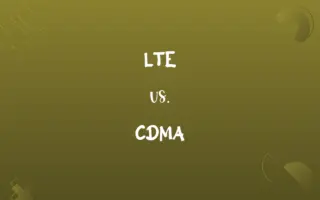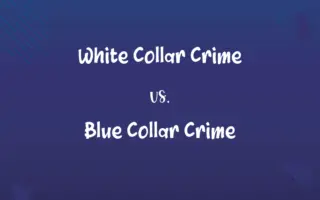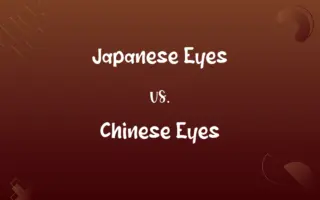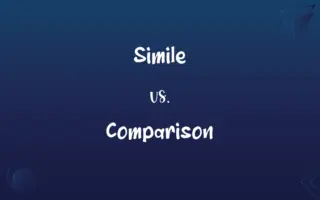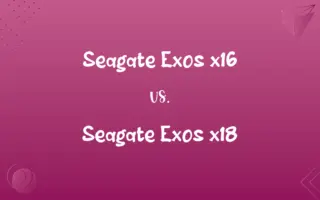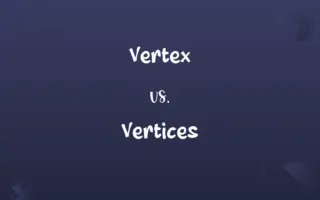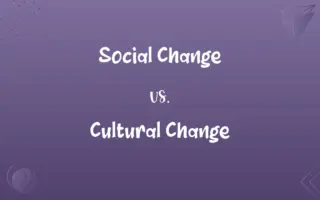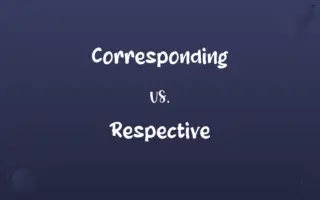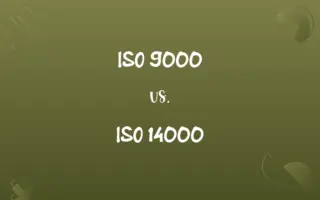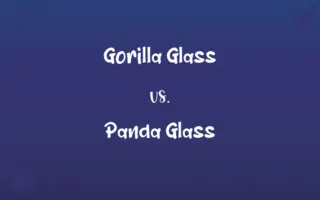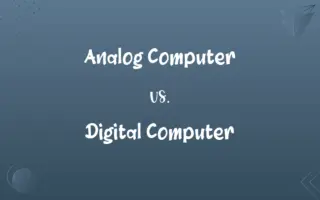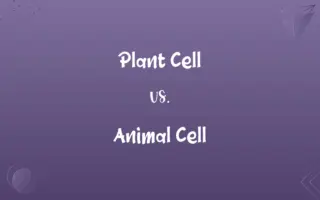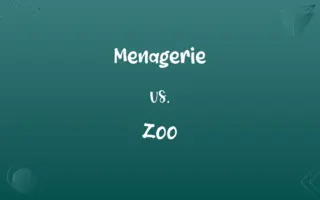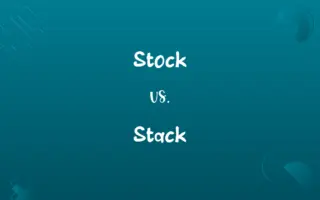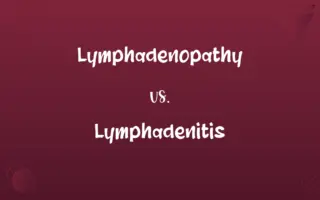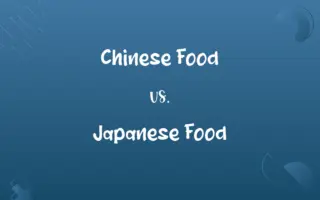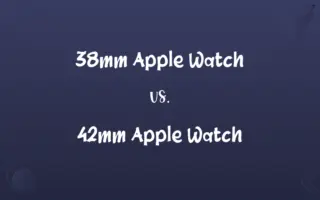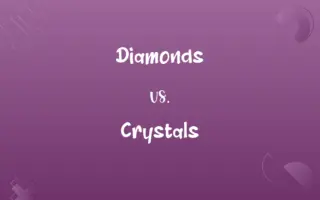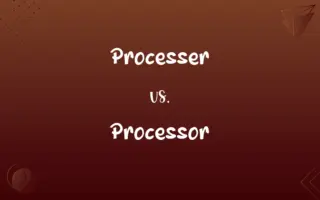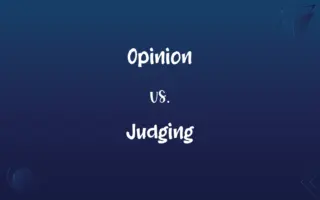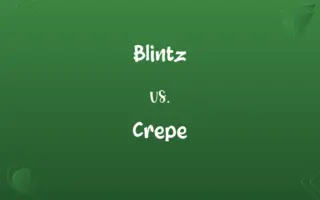Valency vs. Valence Electrons: Know the Difference

By Shumaila Saeed || Published on February 10, 2024
Valency refers to the combining power of an element, while valence electrons are the outermost electrons involved in chemical bonding.
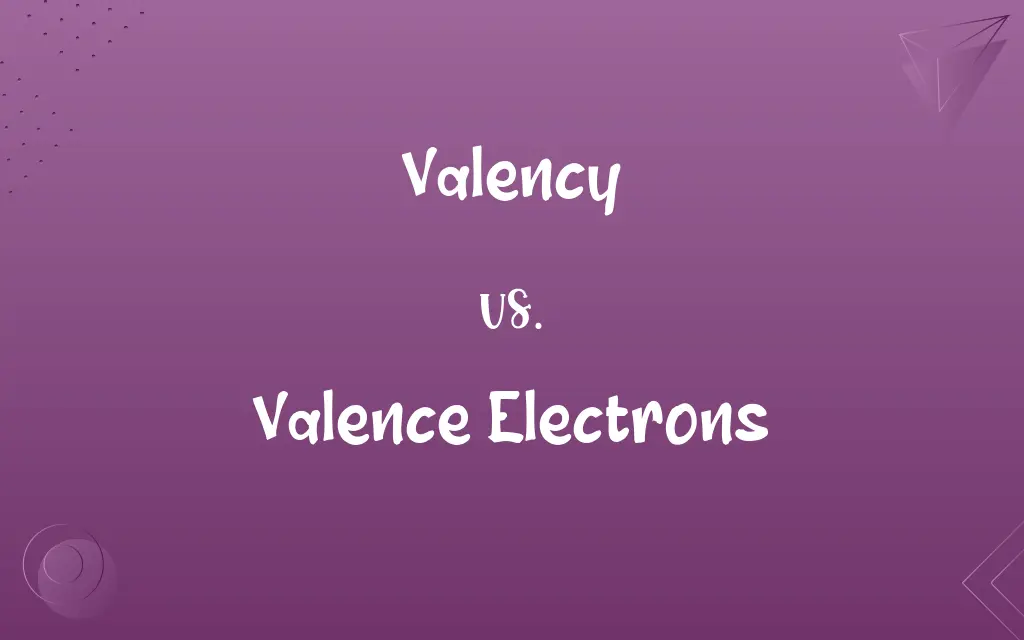
Key Differences
Valency is a concept in chemistry that describes the ability of an atom to combine with other atoms, determined by the number of electrons an atom needs to gain, lose, or share to fill its outer shell. Valence Electrons, on the other hand, are the electrons in the outermost shell of an atom that are available for bonding with other atoms. These electrons play a key role in chemical reactions and determine the valency of an element.
Shumaila Saeed
Feb 10, 2024
In determining chemical behavior, Valency is crucial as it indicates how many chemical bonds an element can form. It can be positive, negative, or zero. Valence Electrons dictate this ability since the number of these electrons directly influences an atom's tendency to form bonds. For instance, an atom with one valence electron, like hydrogen, typically has a valency of +1.
Shumaila Saeed
Feb 10, 2024
The concept of Valency is more abstract, representing a property of atoms derived from their electronic structure. It's a numerical value that signifies bonding capabilities. Valence Electrons are more concrete, being actual components of an atom's structure. They are physically present in the atom’s outermost electron shell.
Shumaila Saeed
Feb 10, 2024
Valency can change depending on the compound an element is part of, reflecting the different ways an element can bond. In contrast, the number of Valence Electrons an element has is fixed, determined by its position in the periodic table, though these electrons can be shared, lost, or gained in chemical reactions.
Shumaila Saeed
Feb 10, 2024
Valency is key in understanding how molecules form, as it guides the way atoms connect in a molecule. Valence Electrons are the agents of this connectivity, engaging in covalent, ionic, or metallic bonding depending on the nature of the elements involved and their electronic configurations.
Shumaila Saeed
Feb 10, 2024
ADVERTISEMENT
Comparison Chart
Definition
The measure of an atom's ability to bond with other atoms.
The electrons in the outermost shell of an atom.
Shumaila Saeed
Feb 10, 2024
Role in Chemical Bonding
Indicates how many bonds an element can form.
Participate directly in bonding by being shared, lost, or gained.
Shumaila Saeed
Feb 10, 2024
Dependence
Depends on the element's need to complete its outer shell.
Fixed number based on the element’s position in the periodic table.
Shumaila Saeed
Feb 10, 2024
Variability
Can vary based on the compound and bonding type.
Constant for an element, but their sharing or transfer leads to bonding.
Shumaila Saeed
Feb 10, 2024
Relation to Electronic Configuration
Derived from the need to achieve a stable electron arrangement.
Directly related to the atom's electronic configuration.
Shumaila Saeed
Feb 10, 2024
ADVERTISEMENT
Valency and Valence Electrons Definitions
Valency
The measure of an atom's combining power with other atoms.
The valency of oxygen is 2, as it forms water by bonding with two hydrogen atoms.
Shumaila Saeed
Jan 25, 2024
Valence Electrons
Electrons that participate in chemical reactions by being gained, lost, or shared.
Oxygen uses its six valence electrons to form two covalent bonds in water.
Shumaila Saeed
Jan 25, 2024
Valency
The capacity of an element to form a specific number of chemical bonds.
Carbon exhibits a valency of 4, enabling it to form methane (CH4).
Shumaila Saeed
Jan 25, 2024
Valence Electrons
Electrons that influence an element's chemical properties and reactivity.
The reactivity of alkali metals is due to their single valence electron.
Shumaila Saeed
Jan 25, 2024
Valency
The number of hydrogen atoms that can combine with or displace one atom of the element to form a compound.
Nitrogen's valency of 3 allows it to form ammonia (NH3).
Shumaila Saeed
Jan 25, 2024
ADVERTISEMENT
Valence Electrons
Electrons in the outermost shell of an atom that determine its bonding behavior.
Sodium has one valence electron, which it readily loses to form a positive ion.
Shumaila Saeed
Jan 25, 2024
Valency
A property of elements that denotes the number of electrons an atom can use for bonding.
The valency of chlorine is 1, as it needs one electron to complete its outer shell.
Shumaila Saeed
Jan 25, 2024
Valence Electrons
The electrons available for bonding in the outermost electron shell.
Carbon has four valence electrons, allowing it to form diverse organic compounds.
Shumaila Saeed
Jan 25, 2024
Valence Electrons
The key electrons in determining how an element interacts with others.
Chlorine's seven valence electrons make it highly reactive, seeking to gain one electron.
Shumaila Saeed
Jan 25, 2024
Valency
The capacity of something to combine with other things, as for example the capability of a vaccine as measured by the number of pathogen serotypes that it can counteract.
Vaccine valency
Shumaila Saeed
Jan 22, 2024
Valency
(biology) a relative capacity to unite or react or interact as with antigens or a biological substrate
Shumaila Saeed
Jan 22, 2024
Valency
(chemistry) a property of atoms or radicals; their combining power given in terms of the number of hydrogen atoms (or the equivalent)
Shumaila Saeed
Jan 22, 2024
Valency
Reflects the ability of atoms to gain, lose, or share electrons to become stable.
Sodium has a valency of 1, indicating it can lose one electron to achieve stability.
Shumaila Saeed
Jan 25, 2024
Repeatedly Asked Queries
What are valence electrons?
Valence electrons are the electrons in the outermost shell of an atom.
Shumaila Saeed
Feb 10, 2024
Can valency change?
Yes, valency can change depending on the chemical environment and the compound the element is part of.
Shumaila Saeed
Feb 10, 2024
Why are valence electrons important?
They are important because they participate in chemical bonding and determine the chemical properties of elements.
Shumaila Saeed
Feb 10, 2024
What is valency?
Valency is a measure of an element's ability to combine with other elements.
Shumaila Saeed
Feb 10, 2024
Is valency always equal to the number of valence electrons?
Not always. Valency and the number of valence electrons can be different, especially for transition metals.
Shumaila Saeed
Feb 10, 2024
Do all elements have valency?
Yes, all elements have valency, which indicates their bonding capabilities.
Shumaila Saeed
Feb 10, 2024
Are valence electrons the same as core electrons?
No, valence electrons are in the outermost shell, whereas core electrons are in the inner shells.
Shumaila Saeed
Feb 10, 2024
Can an element have zero valency?
Yes, elements like noble gases have a valency of zero as they are already stable and typically don't form bonds.
Shumaila Saeed
Feb 10, 2024
Does valency affect molecular structure?
Yes, valency plays a crucial role in determining the structure of molecules.
Shumaila Saeed
Feb 10, 2024
How is valency determined?
Valency is determined by the number of electrons an atom needs to gain, lose, or share to fill its outer shell.
Shumaila Saeed
Feb 10, 2024
How many valence electrons does carbon have?
Carbon has four valence electrons.
Shumaila Saeed
Feb 10, 2024
Can the number of valence electrons change?
The number of valence electrons for an element is fixed, but they can be shared, gained, or lost in chemical reactions.
Shumaila Saeed
Feb 10, 2024
Are valence electrons always involved in bonding?
Yes, valence electrons are the electrons involved in bonding.
Shumaila Saeed
Feb 10, 2024
Can valency be negative?
Valency is not typically described as negative; it usually refers to the number of bonds an atom can form.
Shumaila Saeed
Feb 10, 2024
How does valency relate to chemical formulas?
Valency helps in predicting how atoms will combine and in what ratio, thus influencing chemical formulas.
Shumaila Saeed
Feb 10, 2024
Why do transition metals have variable valency?
Transition metals have variable valency due to the different ways electrons can be arranged in their d and s orbitals.
Shumaila Saeed
Feb 10, 2024
Can valence electrons determine element reactivity?
Yes, the number and arrangement of valence electrons greatly influence an element's reactivity.
Shumaila Saeed
Feb 10, 2024
Do metals and nonmetals have different valencies?
Yes, metals and nonmetals generally have different valencies, often related to their tendency to lose or gain electrons.
Shumaila Saeed
Feb 10, 2024
Share this page
Link for your blog / website
HTML
Link to share via messenger
About Author
Written by
Shumaila SaeedShumaila Saeed, an expert content creator with 6 years of experience, specializes in distilling complex topics into easily digestible comparisons, shining a light on the nuances that both inform and educate readers with clarity and accuracy.

